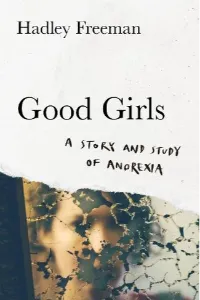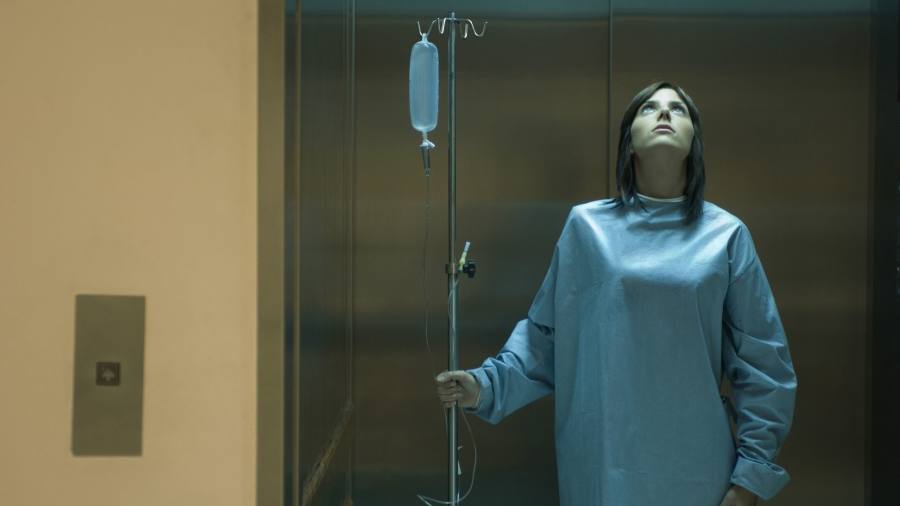

In the first pages of good girls, Hadley Freeman lists the 75 theories that doctors, therapists and strangers have developed to explain why she suffered from anorexia as a teenager. First on the list: her cesarean delivery, which a psychiatrist said meant she would “always try to look for the easy way out”.
Many other hypotheses contradict each other: his parents gave him too little or too much; she was too smart, or not smart enough for her school; she was obsessed with sex, or had an aversion to it. She ends the list with a question she pursues throughout the book: “How do you solve a problem like an unhappy teenager?”
In good girlsjournalist and author The glass house, a memoir about his Jewish family, uncovers layer by layer the factors that contributed to his eating disorder. Weaving together her personal story, conversations with other anorexic patients, and interviews with experts, she shows the complex biological and social conditions that lay the groundwork for the “slippery disease.”
Freeman dismisses simplistic theories that attribute anorexia to an obsession with thinness in fashion magazines or on social media, and insists the disorder isn’t food-related. In fact, looking back in history at the women who were celebrated as martyrs for their starvation, she says, anorexia is “a disease that is amazingly consistent in its message and expression.”

These are, she writes, “fear of sexualization and fear of femininity; it’s about sadness and anger and the belief that you’re not allowed to be sad and angry because you’re supposed to be perfect; and it’s about feeling completely overwhelmed by the world in order to create a new, smaller world with one easy-to-understand rule: don’t eat. »
Girls with anorexia usually develop the disorder at puberty, often frightened by what is becoming of their bodies and the sacrifices that society now expects of them. Some girls may reject these ideas and ideals, but Freeman describes herself as “so unconventional” that she couldn’t.
Freeman manages to turn this tragic and harrowing tale into a gripping story, capturing an experience that many struggle to understand. She describes doing so many star jumps that she literally shook the foundations of the family home and brought a camera to the hospital to record close-ups of her “extremely tight tendons”. It can be painful to read her diary entries, such as when she consoles herself with having her back bone bandaged in the hospital, a sign that despite the program to feed her, she is “still skeletal somewhere”.
She spent the majority of her time from age 14 to 17 in hospitals, where doctors tended to focus on the number on the scale rather than how she felt. While the intent of anorexia is, as she describes it, “often inadvertently feminist,” rejecting the sexualization that a patriarchal society expects of women, the effects of the disease are “anti-feminist”: reducing women to a “helpless, self-destructive, childish state”.
This includes giving some male doctors and nurses inappropriate power over predominantly female patients. His first doctor was later struck off for a “fuzzy and secretive relationship” with a patient. Freeman was not abused by him, but blames his negligence for missing a vital opportunity to intervene in the early stages of the disease. Eventually, with the help of a therapist, she was well enough to be released. There was no miraculous recovery, however, as she continued to suffer from another mental health issue, obsessive-compulsive behavior.
good girls gives a patient’s perspective on a disease so often misunderstood by society and, as evidenced by Freeman’s list of obtuse assumptions of the medical profession, even science. But she spends little time explaining why our biological understanding is so patchy. Anorexia is the deadliest psychiatric disorder – and yet there are no approved drugs for it.
This fits into a broader context of lack of investment in understanding women’s health, a subject sociologist Marieke Bigg tackles head-on in It Won’t Hurt: How Medicine Fails Women. She accuses medical and scientific experts of not listening to women about their problems and of not developing treatments.

Building on the work of Caroline Criado Perez in her bestselling Invisible women, about how women struggle to live in a world designed for men, Bigg criticizes the “bikini view of biology,” which assumes the only difference between the sexes is their reproductive organs. “As far as medicine is concerned, a woman’s life begins when she has her period and ends when she gives birth,” she says.
In some cases, the impact is clear. Studies suggest that women are 59% more likely to be misdiagnosed early in their heart attack because doctors (and viewers) apparently know more about male symptoms than females. There are probably many more examples that we haven’t discovered yet. It’s hard to write a book about what people haven’t studied.
Even within reproductive biology, Bigg argues that women’s health is underfunded. Less than 2.1% of publicly funded research is devoted solely to women’s reproductive health. Bigg bluntly compares endometriosis, a painful condition where tissue similar to the lining of the uterus grows in other places, and diabetes. Both affect one in 10 people and seriously affect quality of life, but funding for diabetes is 20 times higher.
It won’t hurt is at its best hammering home these disparities, but falters when Bigg tries to describe his own experience of feeling misunderstood by the medical establishment. She distrusts doctors – perhaps rightly so – but remains vague about whether hers have made errors in medicine, rather than empathy.
She ends the book by examining how future technologies – such as prototype artificial wombs, where fetuses could develop outside the body – could be used for better or worse; to empower or subjugate women. She is right to criticize the Dutch team working on the device for having no women. But she goes too far when she points out that these devices look more like “hanging testicles” than the shape of a womb, and that they risk becoming “like the rest of medicine no doubt has been. , a male fantasy”.
Medicine is not fiction, but the history of men dominating science and funding it means that there are huge gaps in our understanding of female biology. Compared to other fields, science has been slow to address these inequalities, and scientific discovery can take decades.
However, investing in women’s health research will be easier than tackling the insidious social causes of a disorder like anorexia. Freeman ends with his wishes, including that we tell girls that their bodies are not an outward manifestation of who they are, that they don’t have to make themselves small to express themselves, that there are endless ways to be a girl. The list seems simple, but despite the huge shifts toward gender equality over the past 50 years, society still places expectations on women that leave some desperate to get by.
good girls: A History and Study of Anorexia by Hadley Freeman 4th domain £16.99 / Simon & Schuster $27.99, 288 pages
It won’t hurt: How medicine is failing women by Marieke Bigg Hodder & Stoughton £22/$32.99, 336 pages
Hannah Kuchler is the FT’s global pharmaceutical correspondent
Join our online book group on Facebook at FT Books Coffee
